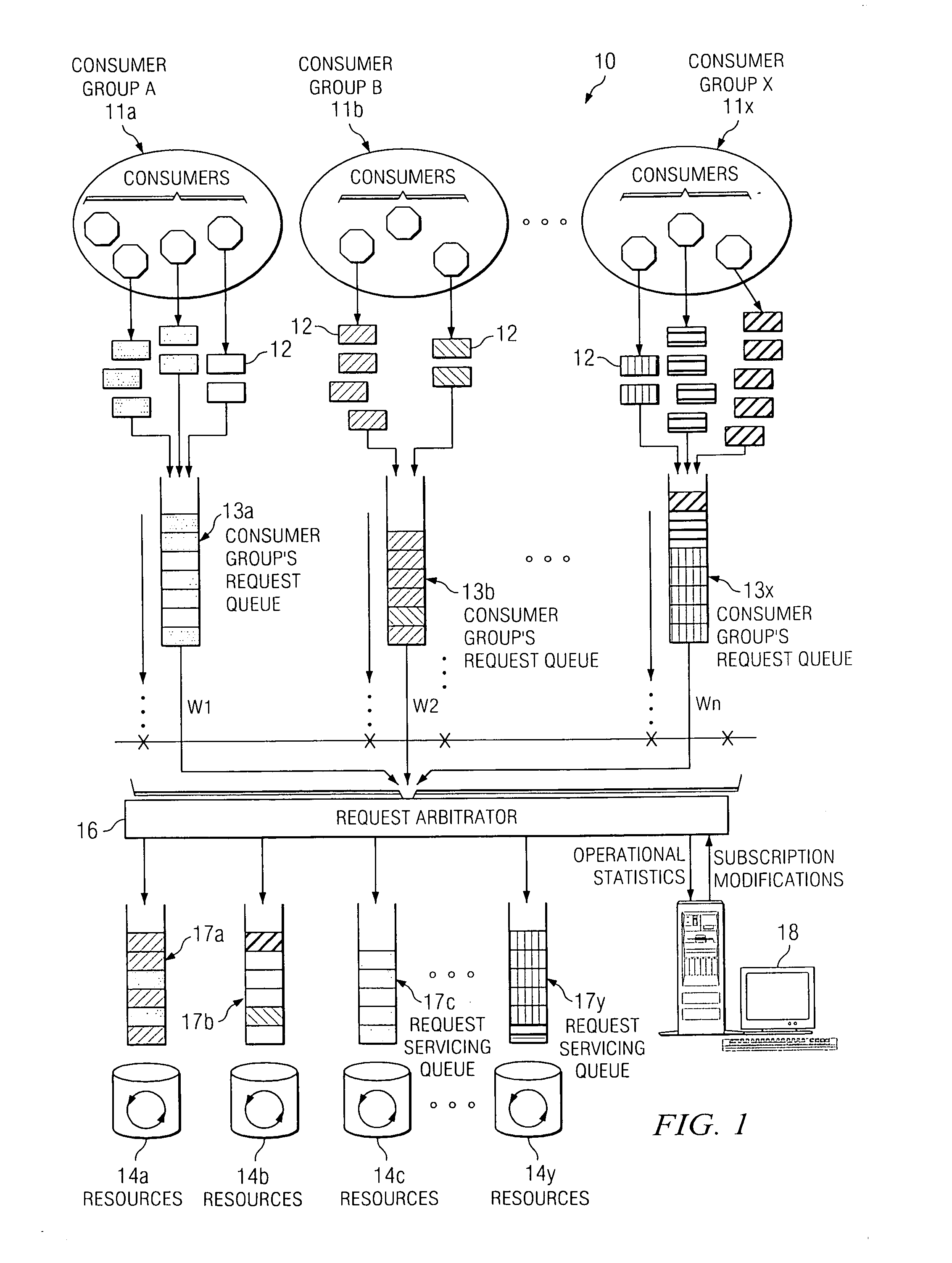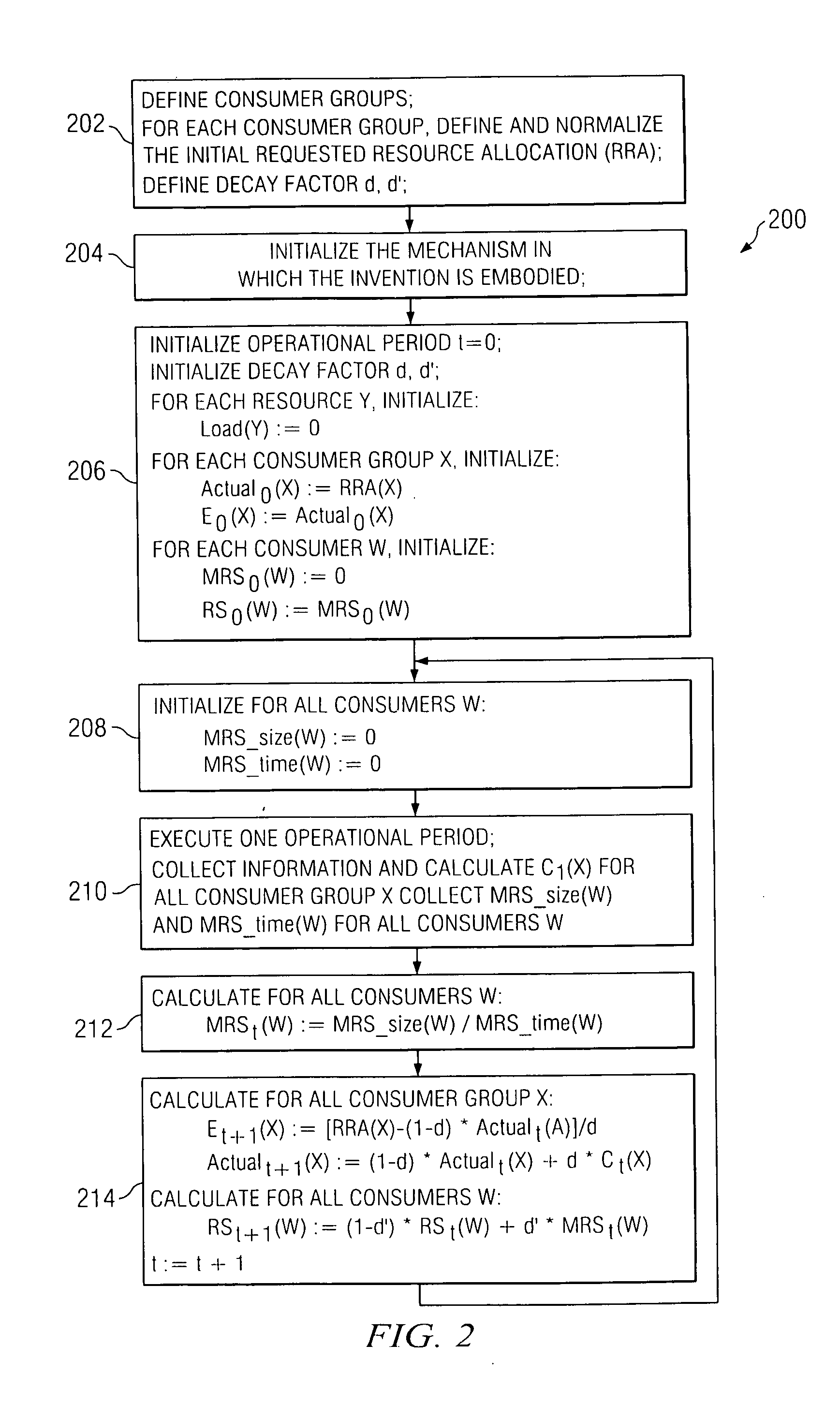Dynamic load balancing resource allocation
- Summary
- Abstract
- Description
- Claims
- Application Information
AI Technical Summary
Benefits of technology
Problems solved by technology
Method used
Image
Examples
Embodiment Construction
The description herein outlines representative embodiments of the invention. However, there could be further variations in the embodiments of the invention.
The meaning imparted to the terms below and throughout this paper is intended not as a limitation but merely to convey character or property relevant to the present invention. Where the terms have a special meaning or a meaning that is inapposite to accepted meaning in the art, the value of such meaning is not intended to be sacrificed to well-worn phrases or terms.
Group—A collection of consumers that is categorized to share the same characteristics. Characteristics refer to how the consumers use the available resources. For example, a collection of requests that is going to a particular collection of remote system nodes that are fifteen kilometers away from the sender can be grouped together because the requests share the same latency characteristics.
Consumer—An entity that produces consumer requests which in turn consume...
PUM
 Login to View More
Login to View More Abstract
Description
Claims
Application Information
 Login to View More
Login to View More - R&D
- Intellectual Property
- Life Sciences
- Materials
- Tech Scout
- Unparalleled Data Quality
- Higher Quality Content
- 60% Fewer Hallucinations
Browse by: Latest US Patents, China's latest patents, Technical Efficacy Thesaurus, Application Domain, Technology Topic, Popular Technical Reports.
© 2025 PatSnap. All rights reserved.Legal|Privacy policy|Modern Slavery Act Transparency Statement|Sitemap|About US| Contact US: help@patsnap.com



